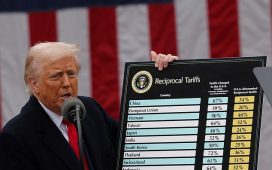Markets powered ahead in the first half of 2024. So what’s the outlook from here?
The Morningstar US Market Index gained 14% in the first half, fueled by strong earnings, a resilient economy, and the seemingly unstoppable artificial intelligence trade. Three consecutive months of worryingly high inflation reports dented stocks in April, but the market didn’t stay down for long.
Looking ahead to the remainder of the year, analysts say equities can continue to climb, but they warn that the risks of elevated valuations and a rally concentrated in just a handful of names are beginning to compound. Meanwhile, economists say that while they expect economic growth to cool in the coming months, they don’t anticipate a problematic slowdown that leads to a recession. And while traders began the year anticipating six or even seven interest rate cuts from the Federal Reserve in 2024, they now expect just one or two.
Here’s what the market and economic outlook means for investors.
US Market Performance: H1 2024
Morningstar Direct
The Bull Market for Stocks Can Power Ahead…
Analysts say the forces that propelled stocks higher in the first half will remain intact in the second. “The modest earnings acceleration is continuing, the economy and inflation appear to be moderating enough for the Fed to lower its benchmark rate, and the market tends to enjoy a year-end rally during presidential election years,” Ed Clissold, chief US strategist at Ned Davis Research, wrote at the end of June.
David Lefkowitz, head of US equities at UBS Global Wealth Management, points to growing investment in AI technology, solid profit growth, and a pivot to rate cuts as inflation continues to fall. “Overall, we believe the environment remains supportive for US equities and investors should have a full allocation to the asset class,” he wrote in a recent client note.
The S&P 500 Index started the quarter at 5,470, and Clissold’s year-end target is 5,725 – a gain of 4.6%. Goldman Sachs analysts target a year-end level of 5,600 (a 2.4% boost), while UBS Global Wealth Management analysts are slightly less optimistic and target 5,500 (a 0.5% increase).
…But Risks Are Mounting
That rosy outlook is not without risks, however. With valuations climbing and a handful of mega-cap tech stocks driving the market’s returns, Clissold warns that the market is now “vulnerable to bigger drawdowns.”
James Ragan, director of wealth management research at DA Davidson, adds: “a more sustainable market rally will require broader participation. Unfortunately, we haven’t really seen that. It’s gone the other way over the last couple of months.”
Combine that with concern over slowing earnings and weakness in the consumer sector, and you have a recipe for greater portfolio risks. Ragan is more bearish than many, with a year-end estimate for the S&P 500 of 5,000 – 8.6% below where the index began the second quarter.
Time to Diversify
Against this backdrop, some strategists recommend that investors look beyond the giants that propelled the market higher this year. Rebalancing away from overweight positions in mega-cap tech may feel “painful in the short run,” Ragan says, especially if those stocks continue to run, but “it’s absolutely the prudent decision for longer-term investors. It’s a way to reduce risk and still participate in the gains.”
Morningstar chief US market strategist Dave Sekera points to undervalued areas, like small-cap and value stocks. “While a rising tide can lift overvalued AI stocks even further into overvalued territory in the short term, in the future we think long-term investors will be better off paring down positions in growth and core stocks, which are becoming overextended, and reinvesting those proceeds into value stocks, which trade at an attractive margin of safety,” he advised in his third-quarter outlook.
Growth Slowing, but Recession Unlikely
Economic growth slowed over the first half of the year, with US GDP growth falling to 1.4% in the first quarter from 3.4% in the fourth quarter of 2023 as the effects of the Fed’s rate hiking cycle continued to make their way through the economy. Consumer spending slowed, and the lingering economic boost from the aftermath of the pandemic faded.
Analysts are looking ahead to further cooling over the year. “We’re still expecting the sequential growth rates to drop sharply over the rest of 2024 and remain low through early 2025,” Morningstar chief US economist Preston Caldwell wrote in his July economic outlook. He’s forecasting 2.4% GDP growth for 2024 and 1.4% for 2025.
For now, analysts say this slowdown is more indicative of a soft landing (or “no landing”) than a recession. In their mid-year outlook, analysts from Bank of America pointed out that the softening gauges of economic health – rising credit card delinquencies, slowing manufacturing activity and retail sales, and a weakening labour market – are indicative of a return to normal from the unsustainably high levels of the pandemic, not a problematic decline. “We see healthy, not recessionary, macro trends,” they wrote in June.
Analysts think that could be good news for markets, but it depends on whether spending holds up. “The interpretation of consumers makes the difference for the more bullish forecasts on the street,” Ragan says. An environment in which the consumer is still strong and spending means “we’ll probably see pretty good corporate performance.” On the other hand, a weaker-than-expected consumer would be bad news.
Rate Cuts Coming in September or December
In general, analysts expect one or two interest rate cuts from the Fed, beginning in September or December, thanks to recent progress on inflation, a resilient job market, and a gradually slowing economy. Investors agree. As of July 3, bond futures markets were pricing in a roughly 60% chance that the first rate cut will come at the Fed’s September meeting, according to the CME FedWatch Tool. Traders see a roughly 32% chance that it will come in December.
Federal Funds Rate Target Expectations for December 18 2024 Meeting
CMS FedWatch Tool. Data: July 2 2024
Caldwell is anticipating a deep rate-cutting cycle beginning in September. “We expect inflation to dip lower in 2025 and 2026 than the market expects, and unemployment to rise a bit more, both of which will call for more aggressive rate cuts,” he wrote.
Of course, the path of interest rates and monetary policy is tied closely to the economy’s performance. The Fed has repeatedly indicated that it will remain “data dependent,” meaning that it is willing to keep rates high for longer if inflation proves sticky and willing to cut earlier than expected in the event of a major slowdown or shock in the economy.











